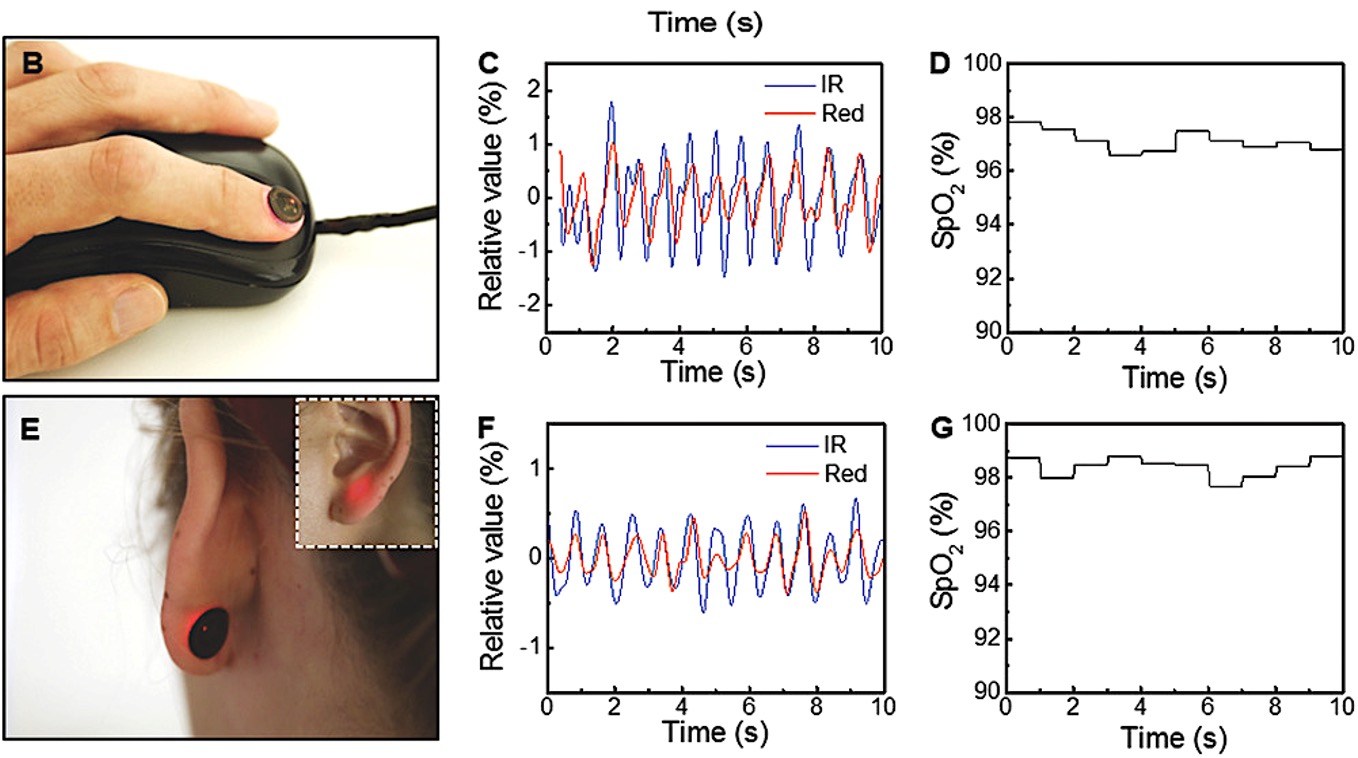This nail sticker can detect when you stop breathing
Sometimes we dig into the archives to see what kind of crazy hacks we can dig out from the depths of the World Wide Web and this one was worth sharing. Researchers at Northwestern University have developed a fingernail sticker that measures heart rate, movement, and blood oxygen, all without a battery.
The Photoplethysmograph (PPG) system is similar to what we've covered before and the motion sensor is simply an accelerometer, so we won't go into those aspects of the device. The parts of the device that caught our eye were the battery-free operation as well as its size. It's so small! And fits perfectly on a fingernail or even on your earlobe. The size here is actually a very nice feature and not just a marketing gimmick. Because the device is so small and light, it is very easy to adhere to the nail or skin with very little sensory perception. Basically, the person wearing the device won't even notice it's there. That's definitely an advantage over the traditional, bulky, hospital-grade instruments we've grown accustomed to.
The device grips very well given its small and lightweight design, so motion artifacts are greatly reduced. Motion artifacts in PPG-based devices are due to the relative motion between the optode (LED and photodiode) and the skin. Traditional approaches to ensuring the device doesn't move are for the patient to remain still during a recording, wear the device tightly against the skin (think about how you should wear your smartwatch to get consistent readings ), or use a very harsh, uncomfortable adhesive as you may have done if you've had an EKG reading before. This device eliminates all three of these problems.
The other aspect of the device that caught our attention is its use of wireless power instead of a battery. In some ways, this could be seen as an advantage or a disadvantage. The device relies on NFC for power and data transmission, a fairly common approach for devices that only need to be used intermittently. Wireless power could be a bit problematic for continuous monitoring devices that provide readings every second or multiple times per second. But who knows, wireless power seems to be everywhere these days.
Digging a bit into the details, the dual-layer antenna is designed around the circumference of the device using wet etching to create traces on a sheet of copper polyimide. The team plated holes through the various layers of the device (optode layer, first antenna layer, polyimide, second antenna layer, component layer, protective topcoat) connecting the antenna to the chip NFC of the die pad (SL13A, AMS AG). Connecting the chip requires some pretty fine soldering techniques, but nothing we're not used to here at Hackaday. More than...

Sometimes we dig into the archives to see what kind of crazy hacks we can dig out from the depths of the World Wide Web and this one was worth sharing. Researchers at Northwestern University have developed a fingernail sticker that measures heart rate, movement, and blood oxygen, all without a battery.
The Photoplethysmograph (PPG) system is similar to what we've covered before and the motion sensor is simply an accelerometer, so we won't go into those aspects of the device. The parts of the device that caught our eye were the battery-free operation as well as its size. It's so small! And fits perfectly on a fingernail or even on your earlobe. The size here is actually a very nice feature and not just a marketing gimmick. Because the device is so small and light, it is very easy to adhere to the nail or skin with very little sensory perception. Basically, the person wearing the device won't even notice it's there. That's definitely an advantage over the traditional, bulky, hospital-grade instruments we've grown accustomed to.
The device grips very well given its small and lightweight design, so motion artifacts are greatly reduced. Motion artifacts in PPG-based devices are due to the relative motion between the optode (LED and photodiode) and the skin. Traditional approaches to ensuring the device doesn't move are for the patient to remain still during a recording, wear the device tightly against the skin (think about how you should wear your smartwatch to get consistent readings ), or use a very harsh, uncomfortable adhesive as you may have done if you've had an EKG reading before. This device eliminates all three of these problems.
The other aspect of the device that caught our attention is its use of wireless power instead of a battery. In some ways, this could be seen as an advantage or a disadvantage. The device relies on NFC for power and data transmission, a fairly common approach for devices that only need to be used intermittently. Wireless power could be a bit problematic for continuous monitoring devices that provide readings every second or multiple times per second. But who knows, wireless power seems to be everywhere these days.
Digging a bit into the details, the dual-layer antenna is designed around the circumference of the device using wet etching to create traces on a sheet of copper polyimide. The team plated holes through the various layers of the device (optode layer, first antenna layer, polyimide, second antenna layer, component layer, protective topcoat) connecting the antenna to the chip NFC of the die pad (SL13A, AMS AG). Connecting the chip requires some pretty fine soldering techniques, but nothing we're not used to here at Hackaday. More than...
What's Your Reaction?















![Three of ID's top PR executives quit ad firm Powerhouse [EXCLUSIVE]](https://variety.com/wp-content/uploads/2023/02/ID-PR-Logo.jpg?#)







